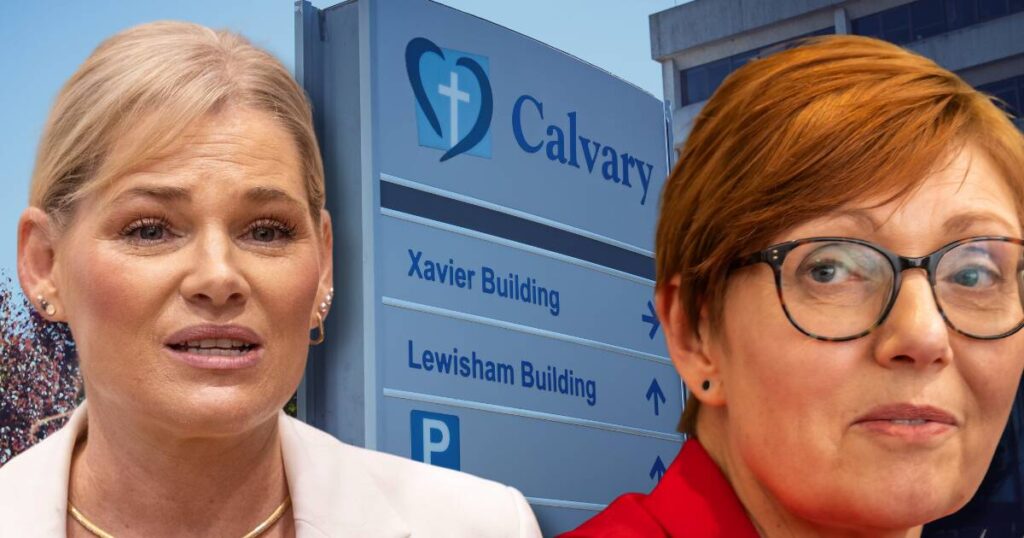
A parliamentary committee has found that a two-stage media strategy designed to avoid presenting a “grossed up” valuation of the final cost for the Calvary hospital takeover led to public confusion and gave the impression that Health Minister Rachel Stephen-Smith had something to hide. The inquiry highlighted the lack of transparency in the communication of the settlement details, which ultimately amounted to $88.2 million.
On September 2, Health Minister Rachel Stephen-Smith announced that the government would pay an additional $65 million to Calvary as part of the final settlement with the Catholic healthcare operator. This followed the territory’s forced acquisition of its public hospital at Bruce. The announcement was part of a broader deal that included a $23.2 million early compensation payment and the waiving of certain debts and liabilities.
The following day, Ms. Stephen-Smith provided further details to the Legislative Assembly, revealing that the settlement also covered $48 million in staff entitlements transferred to the territory in 2023, $14.4 million in waived debts, $220,000 in court costs, and a $750,000 utilities bill. Despite these disclosures, the committee concluded that the initial media strategy contributed to public misunderstanding regarding the total costs involved.
Background and Reactions
The committee’s findings come amidst ongoing scrutiny of the government’s handling of the Calvary Public Hospital acquisition. The inquiry into the amendment of the ACT’s appropriation bill, aimed at facilitating the final settlement payment, uncovered that the two-day media strategy was a joint decision by Calvary and the territory. Calvary reportedly preferred not to aggregate the total value of the settlement in public communications.
An ACT government spokesperson explained that throughout the acquisition process, certain information was considered commercial-in-confidence by Calvary, and there were disagreements on how it should be communicated. “The government is committed to transparency in its management of public funds,” the spokesperson affirmed, emphasizing the decision to amend the appropriation bill to ensure transparency.
Opposition Leader Leanne Castley expressed satisfaction with the committee’s findings, accusing the government of attempting to obscure the true cost of the acquisition. “ACT taxpayers don’t deserve to be ridden roughshod over when it comes to spending $150 million of their money that has delivered no improvement to health services,” she stated.
Expert Opinions and Analysis
Experts in public administration and transparency have weighed in on the situation, noting that the handling of the Calvary settlement reflects broader challenges in government communication strategies. Dr. Emily Tran, a public policy analyst, commented, “The key issue here is the balance between respecting commercial sensitivities and ensuring public accountability. This case highlights the need for clear, upfront communication to maintain public trust.”
The inquiry’s report highlighted that using legislation to provide the settlement funds was deemed more transparent than alternative mechanisms like the Treasurer’s Advance. “In the committee’s view, using legislation to provide the money for the [Calvary settlement] payment is appropriate,” the report stated.
Future Implications and Next Steps
The inquiry’s findings have prompted calls for improved transparency and communication strategies in future government dealings. Ms. Stephen-Smith defended the government’s approach, stating that the agreement with Calvary was made in good faith and that the details were presented as agreed. “This was an approach that was agreed with Calvary, and in good faith. We have consistently worked collaboratively with Calvary,” she told the committee.
Meanwhile, the ACT government continues to face pressure to ensure that future acquisitions and settlements are handled with greater transparency. As the territory moves forward, the lessons from the Calvary settlement are likely to influence how similar situations are managed, with an emphasis on clear and comprehensive communication to the public.
The inquiry made three findings but did not issue any specific recommendations, leaving the government to determine the best course of action to address the concerns raised. As the situation develops, stakeholders and the public alike will be watching closely to see how the government responds to the committee’s findings and whether it takes steps to enhance transparency in future dealings.





